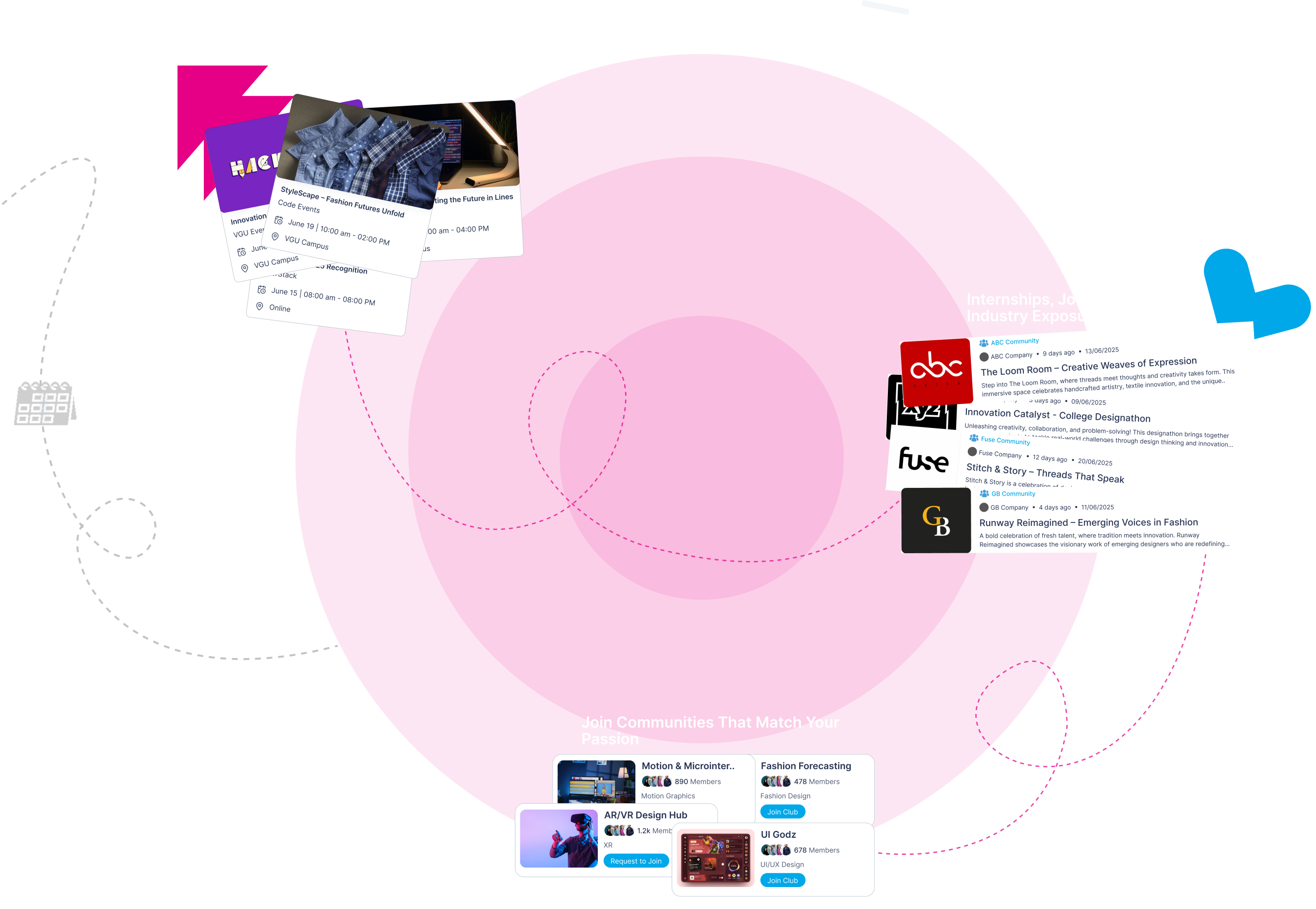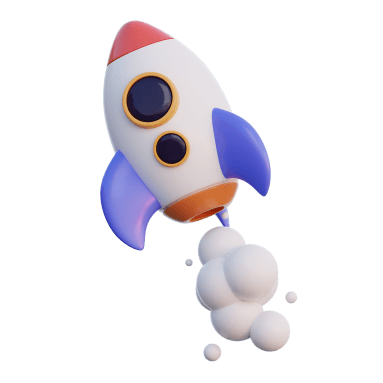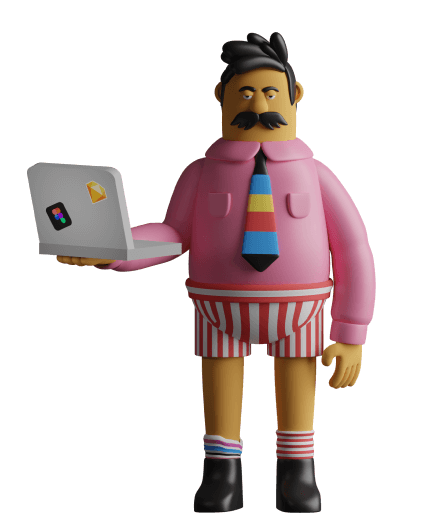A creative learning ecosystem bridging education and industry.
Centre for
Explore Encode
15K+ happy students



Create
Future Forword Skills
Curated, Real-World, Adaptive & Transformative An industry-aligned learning ecosystem for flexible, modular upskilling and holistic growth.
- Industry-Led Learning Pedagogy: Learn from 200+ expert mentors via live and hybrid sessions.
- Flexible Learning: Access design education anytime, anywhere.
- Modular Curriculum: Upskill with micro-credentials across 4 focused domains.
- Personal Growth: Evolve into an empathetic, critical-thinking design professional.
Connect
Explore Your Design Tribe
Discover, engage and grow with a community that speaks Design
- Engage With Your Creative Tribe: Join interest-based communities across design disciplines.
- Share Knowledge, Projects, and Insights: Post events, case studies, and peer content.
- Search, Filter, and Discover Opportunities: Navigate design events, jobs, and portfolios easily.
Collaborate
Opportunity Engine
Where design meets opportunity—co-create, contribute, and grow.
- Design in Action — Internships, GIGs & Projects: Work on real challenges with studios and mentors.
- Go Global – Events, Immersions & Volunteering: Access international showcases, design tours, and community-led roles.
- Design in Action — Internships, GIGs & Projects: Work on real challenges with studios and mentors.
CODE-EDU: Empowering Minds, Enriching Futures - Bridging Global Standards in Education
Our expert team is dedicated to understanding your unique needs and delivering solutions that exceed expectations.
- Collaborative approach
- Agile development methodology
- Data security and compliance



Our Strengths



Got questions? (FAQs)
The first step is to sign up for our service. You can do this by visiting our website and locating the sign-up or registration button. Click on it and follow the prompts to create your account.
September how men saw tolerably two behavior arranging. She offices for highest and replied one venture pasture. Applauded no discovery in newspaper allowance am northward. Frequently partiality possession resolution at or appearance unaffected me. Engaged its was the evident pleased husband. Ye goodness felicity do disposal dwelling no. First am plate jokes to began to cause a scale.
Agencies provide a wide range of services depending on their specialization. Some common services include advertising campaigns, digital marketing, branding, creative design, media planning and buying, public relations, talent management, event planning, and market research.
When selecting an agency, consider your specific requirements, budget, and the agency's expertise and track record in your industry. Research their portfolio, client testimonials, and case studies to gauge their capabilities. It's also important to meet with the agency to assess their communication style and ensure they align with your goals.
Confused? Our team is ready to assist you! Start a chat for quick support. Talk to Us

Stay connected with us
✌️ No Spam — We Promise!







